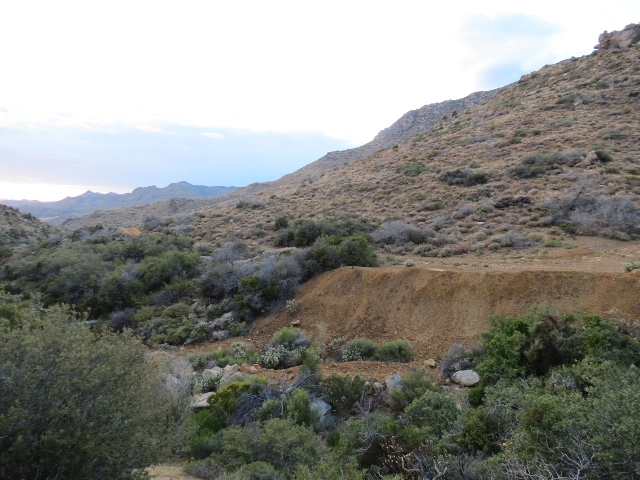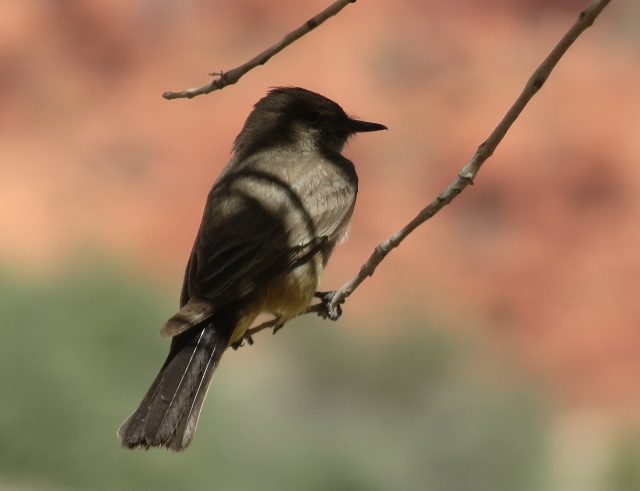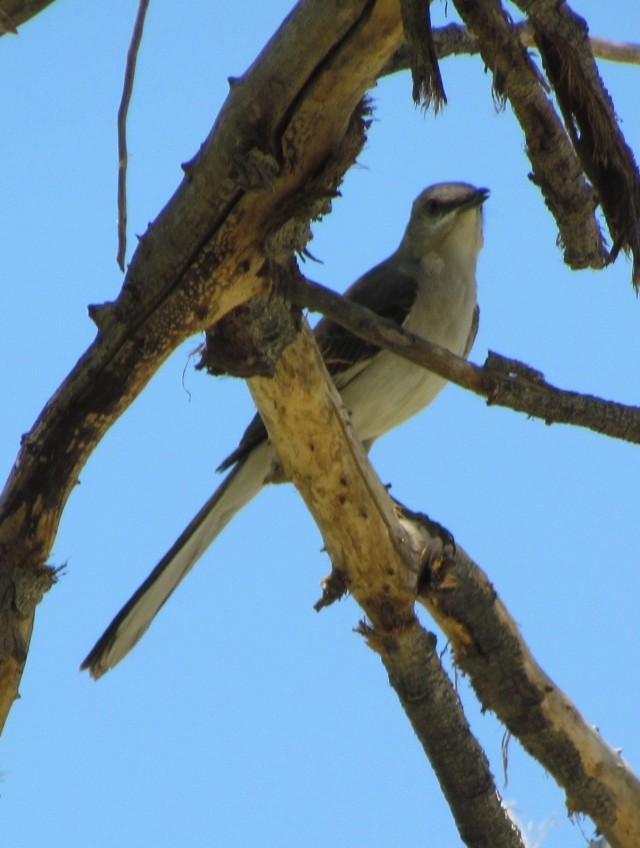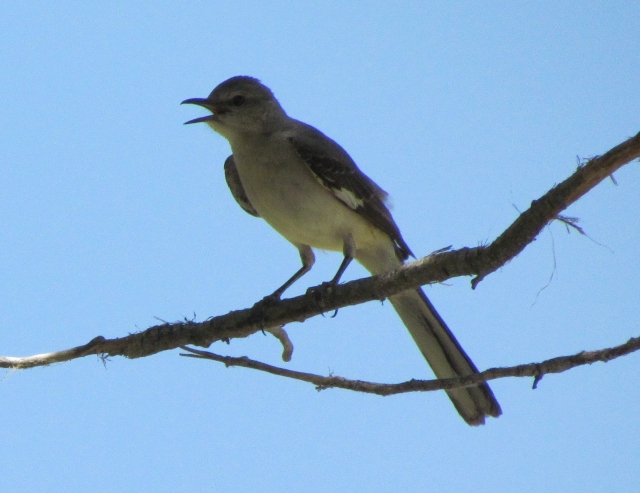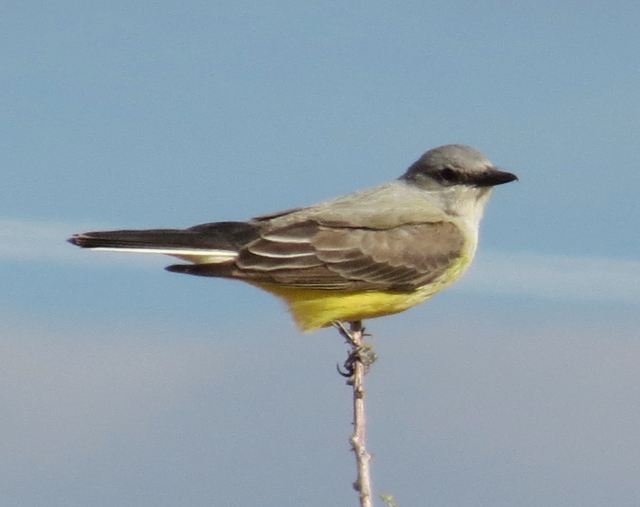While visiting the Las Vegas Area, I came across bird from time to time. An eye-catching creature with ashy gray and lemon-yellow plumage, the Western Kingbird is a familiar summertime sight in open habitats across western North America. Characteristic of kingbird species, the Western Kingbird is very territorial.
These are fairly large members of the Flycatcher Family, with large heads and broad shoulders. They have heavy, straight bills, long wings, and a medium-length, square-tipped tail. Often found perched upright on fences and utility lines, they snag insects from the air or fly out to pick invertebrate prey off the ground.
The name “kingbird” is derived from their “take-charge” behavior. These birds aggressively defend their home turf, even against much larger birds such as hawks.
They will attack humans, livestock, and pets when they think their young are in danger. The males warn off intruders with harsh buzzes or whirring wings. Both sexes snap their bills and raise their red crowns (normally hidden) when provoked.
Western Kingbirds live in open habitats, where they perch on utility lines, fences, and trees. They prefer valleys and lowlands, including grasslands, deserts, sagebrush, agricultural fields, and open woodlands. The Western Kingbird was originally known as the Arkansas Kingbird, but scientists changed its name to acknowledge its wide range.
Occupying the western half of the United States, this bird’s breeding range has been spreading for the last century as an unplanned result of human activities.
By planting trees and installing utility poles in open areas, people have provided hunting perches and nest sites, and by clearing forests they have created open habitats suitable for foraging.

